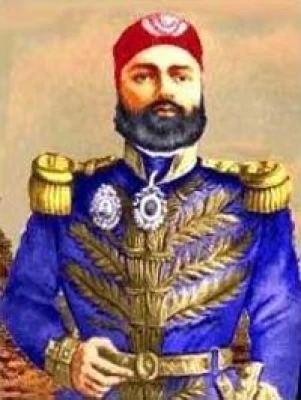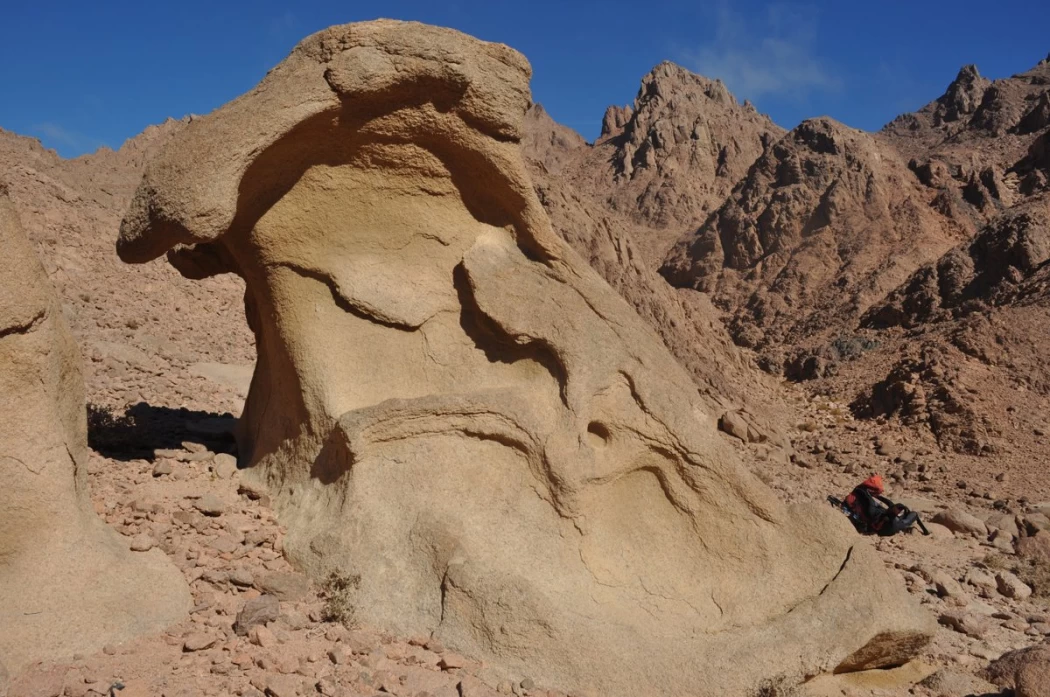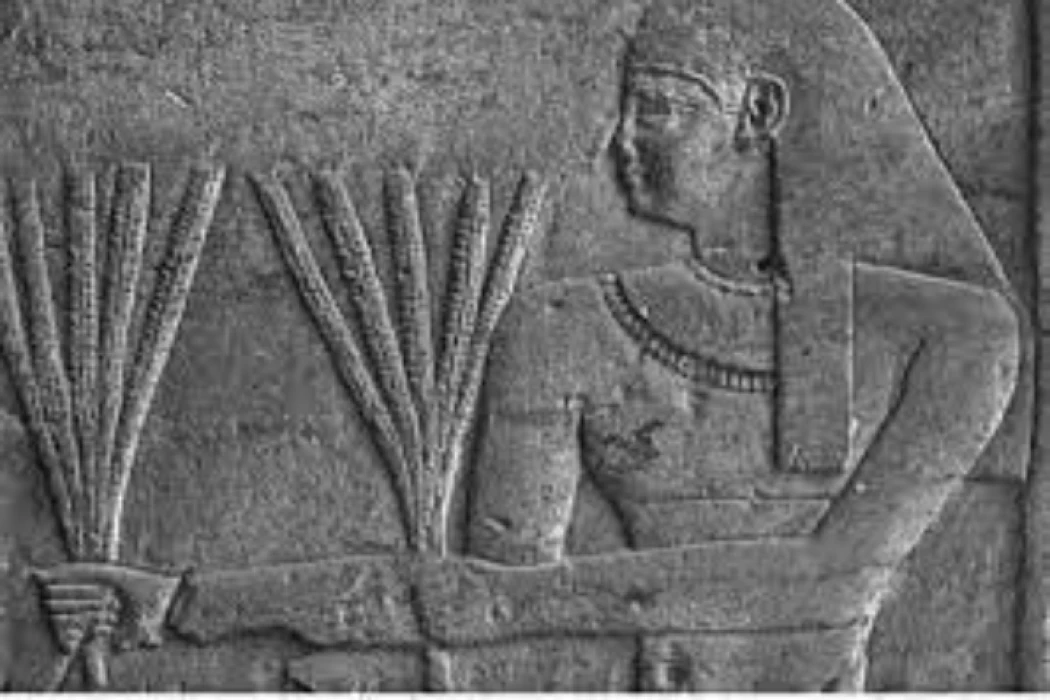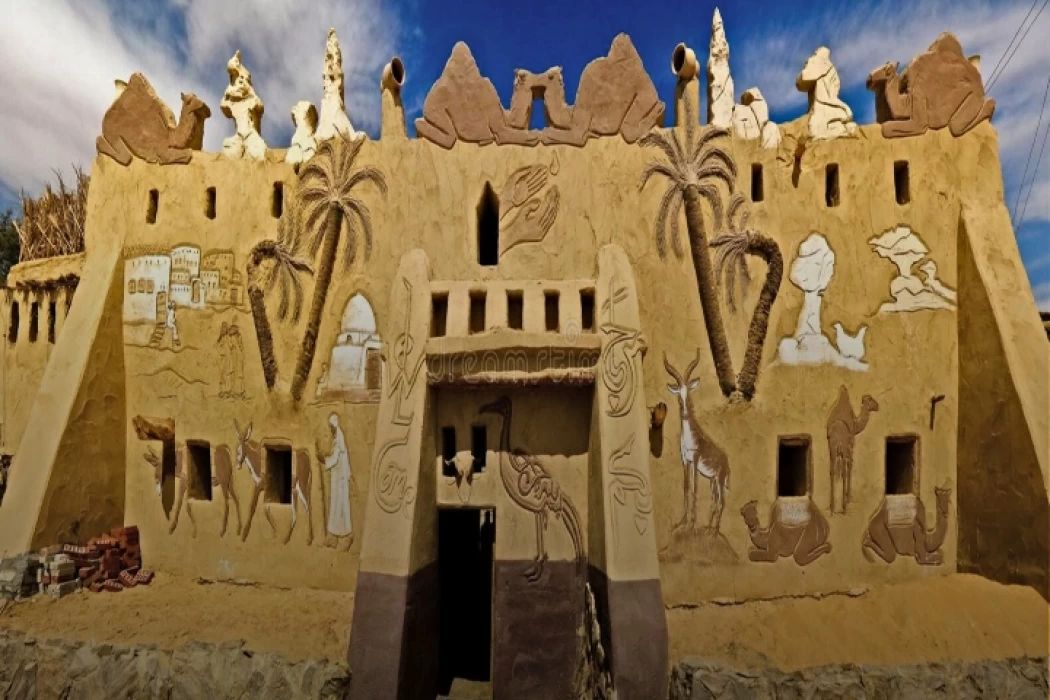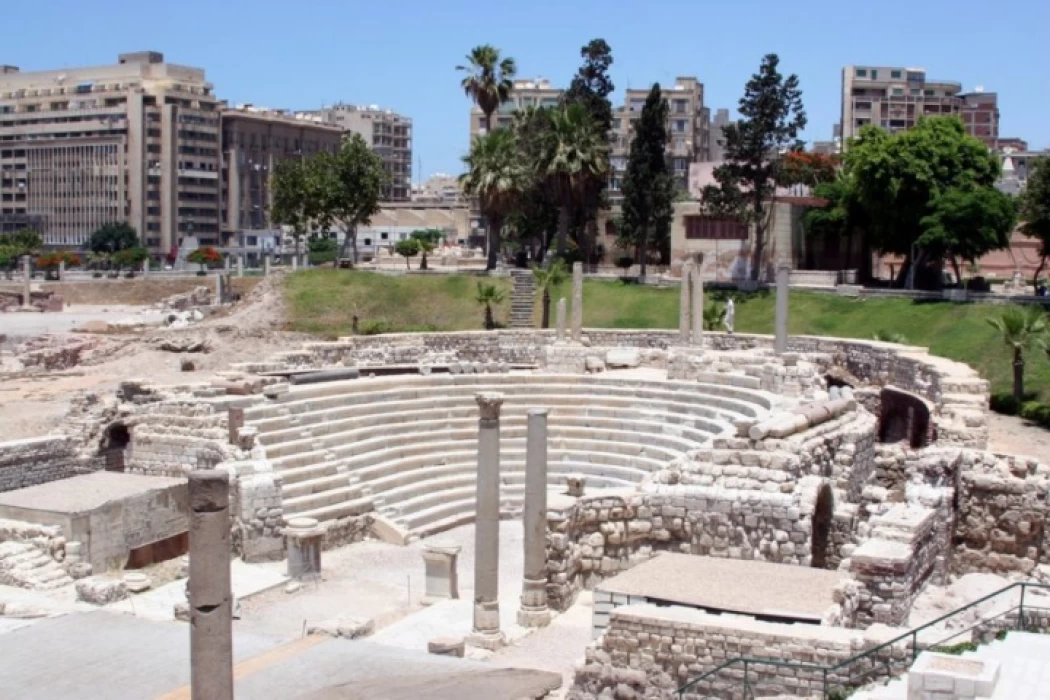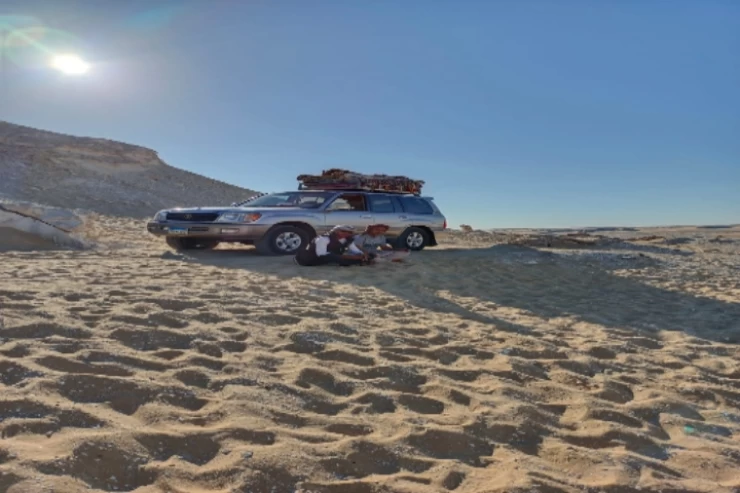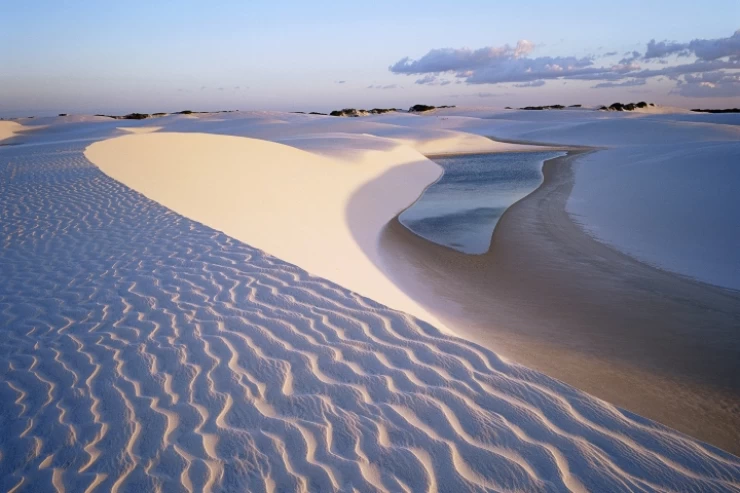
Eid al-Adha Feast in Egypt
Eid al-Adha is one of the two Muslim holidays (the other is Eid al-Fitr), the 10th day of Dhu al-Hijjah falls after the end of the pause of the day of Arafah, the position in which Muslim pilgrims stand to perform the most important rites of Hajj, and ends on the 13th day of Dhu al-Hijjah. This holiday is also a memory of the story of Abraham (peace be upon him) when he saw a vision in which Allah ordered him to sacrifice his son Ishmael, and after he and his son believed the vision, Allah then ordered him to sacrifice a sacrifice instead of his son, so Muslims draw closer to Allah on this day by sacrificing one of the cattle (sheep, cow, camel) and distributing the meat of the sacrifice to relatives, the poor and the people of their home, hence the name Eid al-Adha.
Abu Dawud and al-Tirmidhi narrated in his Sunnah that the Prophet (peace and blessings of Allaah be upon him) presented the city and they have two days to play in them, and the messenger of Allaah (peace and blessings of Allaah be upon him) said: "May Allaah, May he be exalted replace you with them, better than on the day of al-Fitr and the day of sacrifice"
and al-Tirmidhi narrated in his Sunnah " that the messenger of Allaah (peace and blessings of Allaah be upon him) said: "The day of Arafah, the day of sacrifice and the days of Tashreeq are our feast for the people of Islam, and they are days of eating and drinking."from this hadith, we conclude that Eid is two days, a day for breaking the fast and a day for sacrifice, but the sacrifice is followed by the three days of Tashreeq, so it becomes four days, and that is why the majority of scholars forbid fasting these days voluntarily.
Eid al-Adha has different names, including: the day of sacrifice, the Great Feast, The Feast of pilgrims, and others. The days of Eid are marked by prayers and remembrance of Allah, joy and giving, kindness to the poor. Muslim towns and villages are decorated with New Clothes, children are dressed in new clothes, and sweets and fruits abound in Muslim homes.
The great holiday is called in Palestine, Jordan, Lebanon, Egypt, Morocco, Tunisia, Iraq, Libya, Algeria, Sudan and Syria. It is called the feast of pilgrims in Bahrain, and the feast of the Eucharist in Iran. And in Turkey Kurban is called Permo. Where Muslims in Turkey go to the Kurban Bazari market to buy the sacrifice of Eid al-Adha according to the material and social condition of each person, some of them buy a sheep, some of them buy a cow, and some of them buy a camel.
Eid al-Adha falls on the 10th of Dhu al-Hijjah, as the Muslim world celebrates this occasion all over the Earth, and extends until the 13th of Dhu al-Hijjah, where pilgrims finish their rituals one day before it and it is the last day on which the hajj takes place, where the peak of these rituals is on the 9th of Dhu al-Hijjah on which pilgrims climb Mount Arafat.
As for the first days of Eid, pilgrims there in "Mina" offer sacrifices to the face of Allah, along with every able-bodied Muslim in all parts of the Earth. Hence the name of this holiday was Eid al-Adha; as for the huge number of sacrifices that are slaughtered and sacrificed, they are after Abraham, who believed the vision in which God commanded him to slaughter his son Ishmael, and whom God redeemed with a great Ram.
Eid al-Adha celebrations begin with the performance of the Eid prayer at dawn on the first day of the four-day Eid. This prayer is prayed in a chapel outside the "mosques" and it is also permissible inside the mosques. After performing the prayer, Muslims spread out to slaughter their sacrifices.
Takbir on Eid is a confirmed Sunnah, and the jurists disagreed on this issue on three famous sayings:
This is the saying of 'Umar,' Ali, ibn 'Abbas, ibn mas'ud, Jabir,' Umar, al-Zuhri, alcohol, Sufyan, Ahmad and Abu Thur. Ibn Qudamah narrated the consensus of the companions on this, and Abu Hanifa went on to say that it begins after the morning prayer to the afternoon of the day of sacrifice, and his companions went to what the companions and the public went to and based on the fatwa in the madhhab.
Secondly: he grows up from noon on the day of sacrifice to the morning of the last day of sunrise, and this saying is the famous saying of the Shafi'i, which is the saying of the Maliki, and the doctrine of giving.
Third:it starts with the noon prayer from the day of Arafah and ends at the afternoon of the day of sacrifice, and this is a saying among the hanaf. Contraptions (1/195)
The sayings can be summarized as follows:
Hanafis and hanbalis: the time of takbirs begins immediately after the Fajr prayer from the day of Arafah 9 Dhu al-Hijjah, and ends after the Asr prayer from the last day of Tashreeq, 13 Dhu al-Hijjah, so the takbirs will be within five days.
Maliki: Takbir begins after the noon prayer from the day of Eid al-Adha, and ends with the Fajr prayer from the fourth day 13 Dhu al-Hijjah.
Shafi'i: the time of takbirs starts from the dawn of the day of Arafah 9 Dhu al-Hijjah and ends until the sunset of the third day of the day of Tashreeq 13 Dhu al-Hijjah.
Al-Hafiz said: none of this has been proven about the Prophet Hadith, and the most correct thing that was mentioned about the companions was the saying of Ali and Ibn mas'ud that from the morning of the day of ' Arafah to the last days of Mina, Ibn al-Mundhir and others brought it out, and Allah knows best. Fateh al - Bari-Ibn Hajar (2/462) al-Nawawi said: the sect of the investigators of the advanced and late companions chose that it starts from the morning of the day of Arafah and ends with another era of Tashreeq.. He was chosen by Ibn al-Mundhir, Al-Bayhaqi and other imams of our companions who combine jurisprudence and Hadith, and he was the one who chose him. The sum total is (5/34 and 35), and he said : and he said that it is from the morning of the day of Arafah to the afternoon of the last days of the sunrise, which is the most correct for a group of our companions, and he has to work..Explaining al-Nawawi to Muslim (6/180), Al-Awsat to Ibn al-Mundhir (4/303 9, and Sunan Al-Bayhaqi (5/101)), Shaykh al-Islam said: the most correct sayings in Takbeer are that the audience of the predecessors and jurists of the companions and imams should grow up from the dawn of the day of Arafah to the last days of Tashreeq after each prayer and it is prescribed for everyone to utter Takbeer when going out to Eid, and this is by agreement of the four imams. Total fatwas(24/220)
Ibn Hazm said: it is a matter of-and el tankbeer in after every prayer,at the sacrifice, on the days of Tashreeq and on the day of ' Arafah-all good, because zooming in is a good deed, and there is no trace here of Allah's Messenger allocating the mentioned days exclusively. Al-Mahali(5/91)551 al-Hafiz said: the most correct statement in it about the companions is the saying of Ali and Ibn mas'ud that from the morning of the day of ' Arafah to the last days of me Ibn al-Mundhir and others brought it out, and Allah knows best. Fateh al-Bari-Ibn Hajar (2/462) Al - ' uthaymeen said: it is true in this matter that the absolute Takbeer on Eid al-Adha ends with the sunset of the last day of Tashreeq, and therefore it is absolute and restricted from the dawn of the day of Arafah to the sunset of the last day of Tashreeq.
El takberr formulas
As for the formulas of magnification, the proverb from the magnification is: (Allaah is greater, Allaah is greater, Allaah is greater, there is no God but Allaah. And God is greater. Allahu Akbar. And there is an increase, which is " Allahu akbar is great, thank Allahu a lot, Hallelujah is a ball and authentic. May Allah bless Muhammad and his family and his companions and grant him much peace".
The Egyptians have been accustomed to a formula in Takbir since the time of Shafi'i, namely: "Allahu akbar Allahu akbar Allahu Akbar no God but Allahu akbar Allahu Akbar and Allahu Akbar many times and all praise be to Allaah, Allaah Akbar is great and thank Allaah very much and Hallelujah with a ball and original, there is no God but Allaah alone who believed his promise and the victory of his slave and his dearest soldiers and defeated the parties alone, there is no God but Allaah and we worship only him, faithful to his religion, even if the disbelievers hate, Allaah pray for Muhammad, for the family of Muhammad, for the Companions of Muhammad, for the supporters of Muhammad, for the spouses of Muhammad, for the offspring of Muhammad, and too much handover". Al-Shafi'i said about her: "if he grows up as people are growing up today, it is good, and if he grows up more, it is good, and with that, the remembrance of Allah I loved him will not increase."
Among the Shiites
The adage " Allahu akbar Allahu akbar Allahu akbar, there is no God but Allah, and Allahu akbar Allahu Akbar, and all praise be to Allah, Allahu Akbar for what guided us."What is known in the news is to praise the Takbeer first, and add: 'Thank you for what we have first'. Or praise Allah for what he has guided us, and he has Thanks for what he has given us, Allah is greater for what we have provided from the beast of cattle. So the well-known saying in the news is:
"Allahu akbar Allahu akbar Allahu akbar, there is no God but Allahu and Allahu akbar, Allahu Akbar and Allahu Akbar, praise be to Allaah, Allaah Akbar for what guided us and thank Allaah for what gave us (our guidance), and to him thanks for what gave us, Allaah Akbar for what we have provided from the beasts of the cattle.
Washing
Washing for Eid is a certain year for Muslims in the right of everyone; big and small, man and woman alike. It is permissible to wash for Eid before dawn in the most correct way, unlike washing on Friday. It is stated in the book of the singer by Ibn Qudamah al-Hanbali: it is desirable for him to be cleansed by washing for Eid, and Ibn Umar used to wash on the day of Fitr, Ibn Abbas narrated, "that the messenger of Allah used to wash on the day of Fitr and sacrifice."
It is also narrated that the Prophet said on a Friday of the gathering: "this is a day that Allah has made a holiday for Muslims, so wash yourselves, and whoever has good, it does not harm him to touch it, and you should stick to the teeth" narrated by Ibn Majah in the Sunnah. He likes to clean up, wear the best he can find, clean up, and shop.
It is also Sunnah on the day of Eid that all Muslims participate in attending the Eid prayer. Narrated Umm Atiyah: the messenger of Allah ordered us to go out for the breaking of the fast, the sacrifice of the awwak, menstruation and the women of the khudur, as for the menstruating women, they should retire from prayer and witness the good, and the call of Muslims.
Jaber bin Abdullah describes the Eid prayer with the prophet and says: "I witnessed the prayer with the messenger of Allah on the day of Eid, so he began to pray before the sermon without permission or residence. Then he stood leaning on Bilal. He commanded the piety of Allah, urged obedience to him, preached to people and reminded them, and then went on until the women came and preached and reminded them. And he said, "Believe me, most of you are the wood of hell," and a woman among the women stood up with her cheeks bare and said, " why, O Messenger of Allah! He said," because you complain a lot and disbelieve the intimate partner, " he said, so they made them believe in their ornaments and threw them into a Bilal garment of their earrings and rings.».
It is also permissible for him to go to the Eid prayer from one way, and return to his home from another way so that there will be more steps, and more people will watch him, "Jaber said.
The Eid prayer is two Rak'ahs, in the first one he prays seven times, except for the Takbeer of Ihram, in which he raises his hands, and in the second, five times, except for the Takbeer of doing, and it is permissible for a group, and in private, and the time is between sunrise and its demise. He recites in them, and it is permissible to recite in them after the Fatihah with QAF and the moon, or by swimming and ghashiya. The imam then gives two sermons, and at the opening of the first sermon his scar grows nine, and at the opening of the second he grows seven. As for the ruling on the Eid prayer, it is enough to impose, and it was said for a certain year.
Eid is an annual Islamic custom and the custom is money, gift, candy, etc.given to children on Eid al-Fitr and also on Eid al-Adha. this Arab-Islamic custom dates back to ancient centuries.
The streets are crowded with markets for new clothes, food and sweets.
After performing the Eid prayer, people go to their homes in preparation to congratulate parents and relatives, to receive guests, the whole family gathers, the sheep is slaughtered, dessert is served with coffee and Eid lunch, these are the customs of many Muslim countries.
Sacrifice (by opening and stressing it) is one of the rituals of Islam, by which Muslims draw closer to Allah by offering a sacrifice of cattle, from the first days of Eid al-Adha until the last days of Tashreeq, and it is one of the legitimate and unanimous rituals, and it is a confirmed Sunnah for all the sects of Sunnis and the Shafi'i, Hanbali and Maliki Fiqh, except for the Hanafi, they consider it obligatory, Ibn Taymiyyah said, and one of the two narrations about Ahmad, one of the two sayings in the Maliki doctrine, and the Shiites consider that it is definitely desirable. One of the hadiths that indicated the legality of the sacrifice was the Hadith of Anas ibn Malik, who said: "the Prophet (peace and blessings of Allaah be upon him) sacrificed two salted Rams, which he slaughtered with his hand, name and size, and put his foot on their plate. And the Hadith of Abdullah ibn Umar said: "the Prophet (peace and blessings of Allaah be upon him) stayed in Madinah for ten years, sacrificing.». The sacrifice must be undivided, and it is stipulated that it must be free of defects, that it must be the property of the sacrificer, that the right of others does not relate to it, and that it must be sacrificed on time and with intent, and the hanbalis and Shafi'is are required to believe some of its meat while raw.
Latest Articles
Admin
Regin of Abbas I of Egypt | Abbas Pasha I
Abbas has been often described as a mere voluptuary, but Nubar Pasha spoke of him as a true gentleman of the "old school". He was seen as reactionary, morose and taciturn, and spent nearly all his time in his palace. He undid, as far as lay in his power, the works of his grandfather, both good and bad.
Admin
Story of Gabal Shayeb Al Banat - Red Sea Mountain
Jabal shayb al-banat is one of the Red Sea Mountains in the eastern desert in Egypt, located to the west of the city of Hurghada at a latitude of 27 degrees north and a longitude of 33.5 degrees east of the Greenwich line approximately, this mountain is the highest mountain peak in the eastern desert with a height of up to 2185 meters, it is a prominent mass of igneous rocks
Admin
Neper God Of Grain
Neper was the deity of grains, particularly cereals that were important in Ancient Egypt, such as wheat and barley. It was stated that he foretold when the crops would grow, be harvested, and disappear.
Admin
Badr Museum in Farafra
The Badr Museum is located in a mud building, which is the common home found in this medieval part of Egypt. All of the artwork that was created by the artist is quite unique. His work almost always depicts life in the Farafra Oasis and he provides the work through both painting and sculpting.
Admin
Djoser
Djoser was an ancient Egyptian pharaoh of the 3rd Dynasty during the Old Kingdom and was the founder of that epoch. He is also known by his Hellenized names Tosorthros (from Manetho) and Sesorthos (from Eusebius). He was the son of King Khasekhemwy and Queen Nimaathap, but whether he was also the direct successor to their throne is unclear. Most Ramesside king lists identify a king named Nebka as preceding him, but there are difficulties in connecting that name with contemporary Horus names, so some Egyptologists question the received throne sequence. Djoser is known for his step pyramid, which is the earliest colossal stone building in ancient Egypt
Admin
Kom Al Dikka Alexandria
Kom El Deka, also known as Kom el-Dikka, is a neighborhood and archaeological site in Alexandria, Egypt. Early Kom El-Dikka was a well-off residential area, and later it was a major civic center in Alexandria, with a bath complex (thermae), auditoria (lecture halls), and a theatre.
